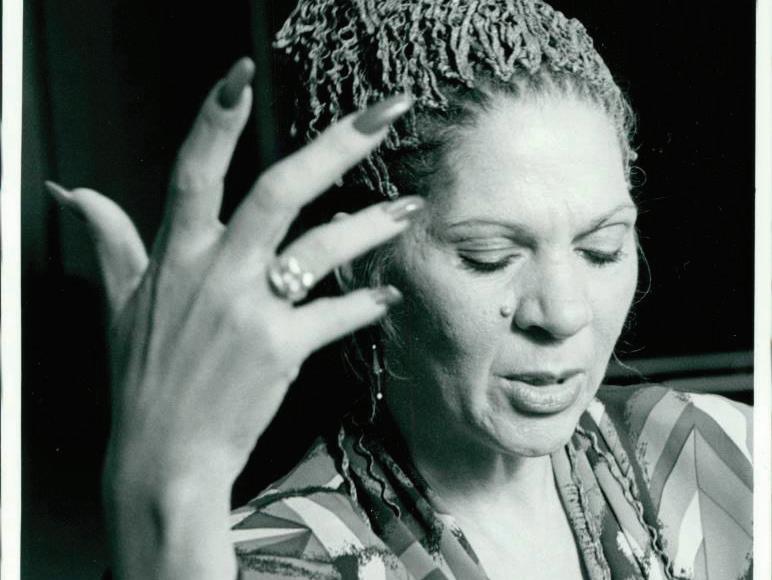
4 minute read
Documenting Denver in the ‘80s and ‘90s
BY BRUCE GOLDBERG SPECIAL TO COLORADO COMMUNITY MEDIA

Denver photographer Robert Weinberg has a surprising characteristic for someone who shoots pictures for a living.
He’s been legally blind since the 1990s.
Weinberg uses the latest technology to make the most of the little vision he has remaining to take photos, to get around on his own and to help other people learn how to live with blindness.
“ e World in Denver: e Photography of Robert Weinberg” exhibit opened Jan. 20 and will be on display for one year in the second- oor mezzanine at History Colorado. It features eight photos from his decades of photography.
“It’s kind of unbelievable,” Weinberg said. “Not only that it’s showing my work, but for a whole year.”
In a History Colorado rst, each exhibit photo will be accompanied by a sign written in Braille to better serve those who are sight-impaired.
“History Colorado means a great deal,” Weinberg said. “It’s one thing to archive your work and know it has a home. But showing the works you’ve done in the past, it gives (validation) to my work.”
But Weinberg, 75, has been through tough times as the world showed less and less of itself as the blindness advanced.
“I went through hell,” he said. “I was clinically depressed. It was years before I could go through all the training (to regain some sight). I did take a long time to learn a lot of things that help me.”
And help is available out there.
A text-reading software named JAWS (Job Access With Speech) helped Weinberg become a touch typist, easing the writing process.
“Now I can write all sorts of stu , use email and read websites,” he said. “It’s the best and most expensive text-reading software. When I rst started losing my sight, a doctor said what I had was the best thing I could have had when you’re losing your sight.”


Closed-circuit TV has been another helpful tool. Its camera enlarges things, making them easier to see and read.
“It also has OCR — Optical Character Recognition — that can scan a printed-out page and read it to you,” Weinberg said.
Weinberg is a fan of the Colorado Talking Books Library at 180 Sheridan Blvd. in Denver’s Barnum West neighborhood. He downloads books to a ash drive and listens to the narrative.
“Which is wonderful,” he said.
Weinberg was drawn to photography in 1965 when he took his rst photo course at George Washington High School, using a pinhole camera.
“You’d work with printed-out paper, make an image work in the dark, x it and then you’d have a print without having had a negative,” he said.
He’s still taking photos — and gave himself an assignment to shoot a large project of workers replacing all the elevators in a residential building.
“So I documented all the cranes that were there,” Weinberg said.
He gave prints of his work to some of the workers.
Jeremy Morton, public engagement manager at History Colorado, praised Weinberg’s innate photography skills.
“He has this ability to take closeup portraits of people in a way that intrigues them and highlights their humanity, and see into the person, even if you don’t know the back story,” Morton said. “He’s considered one of the preeminent photographers in Denver in the 1980s and 1990s. The work he produced during that time is considered (to be) like the documentation of Denver.”

Kodo Taiko Performing Arts Ensemble to appear at DU Feb. 18-19
BY CHANCY J. GATLIN-ANDERSON SPECIAL TO COLORADO COMMUNITY MEDIA




Off the west coast of Japan lies the island of Sado, home to luscious green forests, steep oceanside cli s and the most renowned taiko drummers in the world.
Early mornings on the island, residents are greeted with the deep, thumping sound of drumming as they make their way to work and school. e radiating sound of a gong can be heard for miles as the performers practice throughout the day to perfect their ancient craft. e drumming of the KODO Taiko Performing Arts Ensemble has been the soundtrack to the lives many Sado people as they go about their days for more than four decades. Sado Island is home to the Kodo Apprentice Center, the home for new hopefuls to complete a two-year apprenticeship program before becoming members of the o cial ensemble. Kodo apprentices live communally at the center, where they learn taiko, dance, song, bamboo ute and other traditional Japanese arts. ey live a very minimalist lifestyle, rid of distractions so they can concentrate on their rigorous training. Cell phones, computers and dating are strictly prohibited for apprentices while living on Sado.
duced to Japan in the sixth century CE through Korean and Chinese cultural in uence along the Silk Road, a pan-Eurasian trade system that lasted for nearly two millennia. Contemporarily used as traditional performance instruments, taiko have been used throughout Japanese history — during wartimes to organize troops, at royal processions, throughout religious rituals and sometimes as personal instruments. Performance taiko drumming evolved in the mid-20th century, becoming popular at Japanese festivals to entertain laypeople. Later in the 1980s, taiko performance would become popularized worldwide with traveling ensembles like Kodo.
e Kodo Taiko Performing Arts Ensemble will be performing at the Robert and Judi Newman Center for the Performing Arts at the University of Denver on Feb. 18 and 19. Kodo will perform its One Earth Tour entitled “Tsuzumi.” e performance will be a highlight of Kodo’s home on Sado Island, sharing the tale of its ancient history and tranquil landscape.
“Kodo One Earth Tour: Tsuzumi is the rst production in a series of commemorative works we created for Kodo’s 40th anniversary celebrations in 2021,” said Director Yuichiro Funabashi in a news release. “ e theme of this work is our home base, Sado Island. With its lush nature and distinct history, this special place has been the starting point for Kodo’s diverse local and international activities for the past four decades. Conjured and honed on Sado, Kodo’s sound is like no other. I sincerely hope you’ll enjoy this performance and the visceral sound of Kodo’s taiko.”






